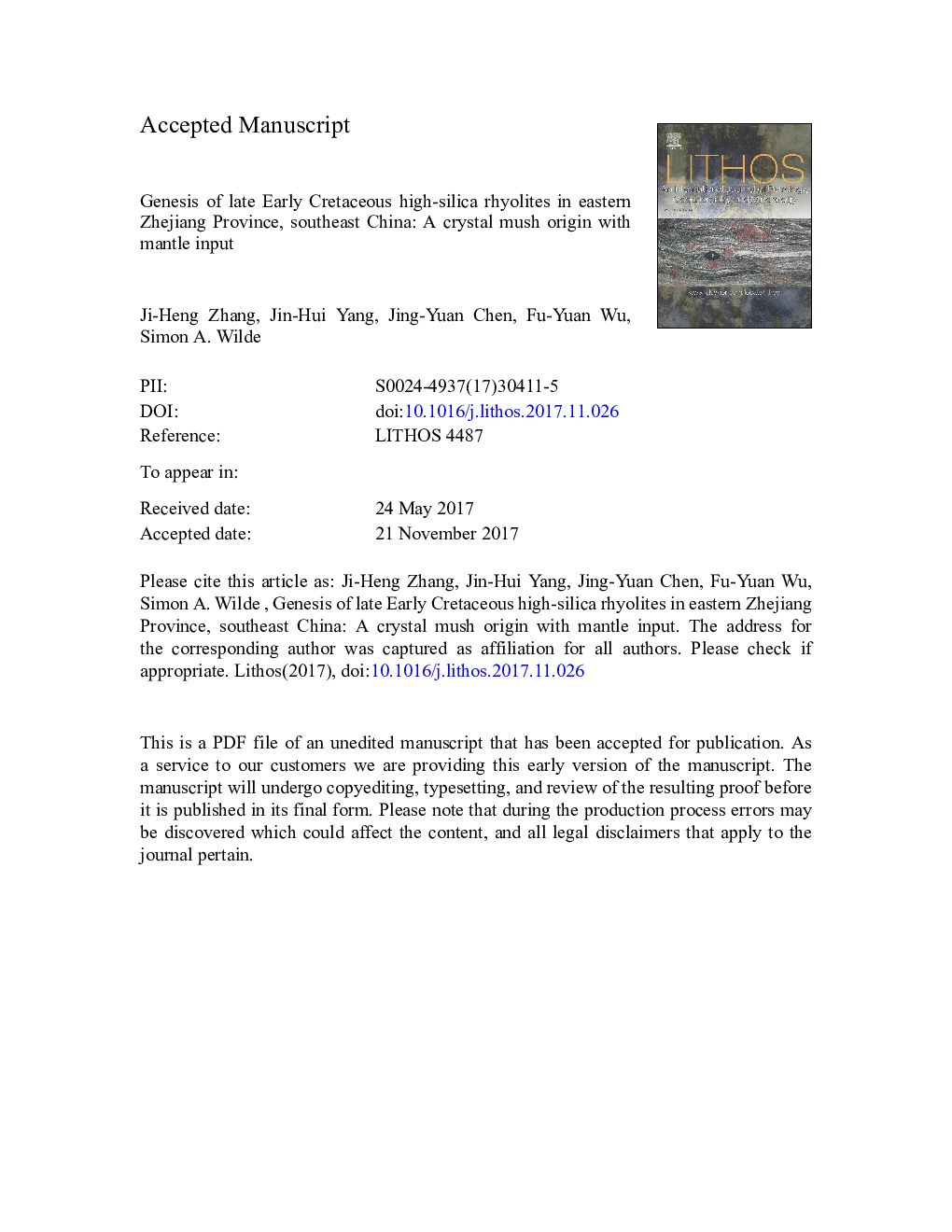| Article ID | Journal | Published Year | Pages | File Type |
|---|---|---|---|---|
| 8911824 | Lithos | 2018 | 73 Pages |
Abstract
Voluminous Mesozoic felsic volcanic rocks and granites in southeastern China provide a unique opportunity for studying the role of crustal magmatism in the evolution and modification of the crust in the eastern Cathaysia Block. The high-silica rhyolites of the upper volcanic sequence in eastern Zhejiang Province were investigated, focusing on their genesis and their relationship with contemporaneous granites. Rhyolites in the Tiantai, Yongkang and Liucheng basins were dated as late Early Cretaceous (from 111Â Ma to 106Â Ma in age). These rocks contain a large proportion of inherited zircons of ca. 130Â Ma, corresponding to the age of the lower volcanic sequence in the area. However, the zircons of different ages have similar ranges of oxygen and Hf isotopes, implying similarities in the magmas from which they were generated. The rhyolites of the upper sequence also resemble those of the lower sequence in terms of their geochemistry. It is concluded that the former were derived by reworking of magma mush formed during the earlier magmatic episode via fractionation of feldspars and accessory minerals, e.g., zircon. Fractionation took place within the magma crystal mush by extraction of interstitial melts and accumulation of residual mineral phases, aided by the emplacement of contemporaneous basaltic magmas at the base of the crust. Overall, the geochemical features of the volcanic rocks in southeastern China indicate that episodic magmatism and reworking of crystal mush were essential mechanisms that drove the evolution of the igneous rocks and the hence crustal architecture in this area.
Related Topics
Physical Sciences and Engineering
Earth and Planetary Sciences
Geochemistry and Petrology
Authors
Ji-Heng Zhang, Jin-Hui Yang, Jing-Yuan Chen, Fu-Yuan Wu, Simon A. Wilde,
